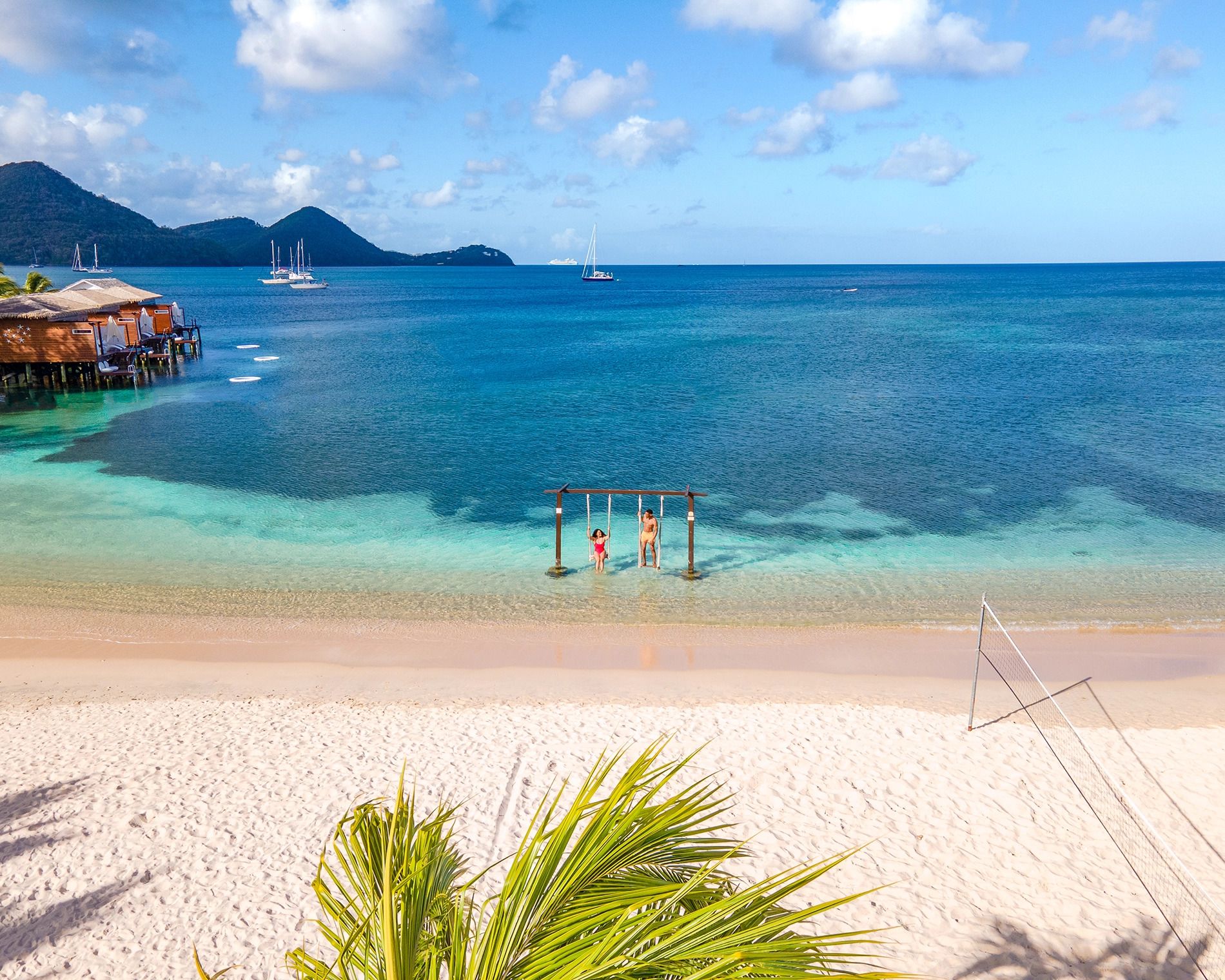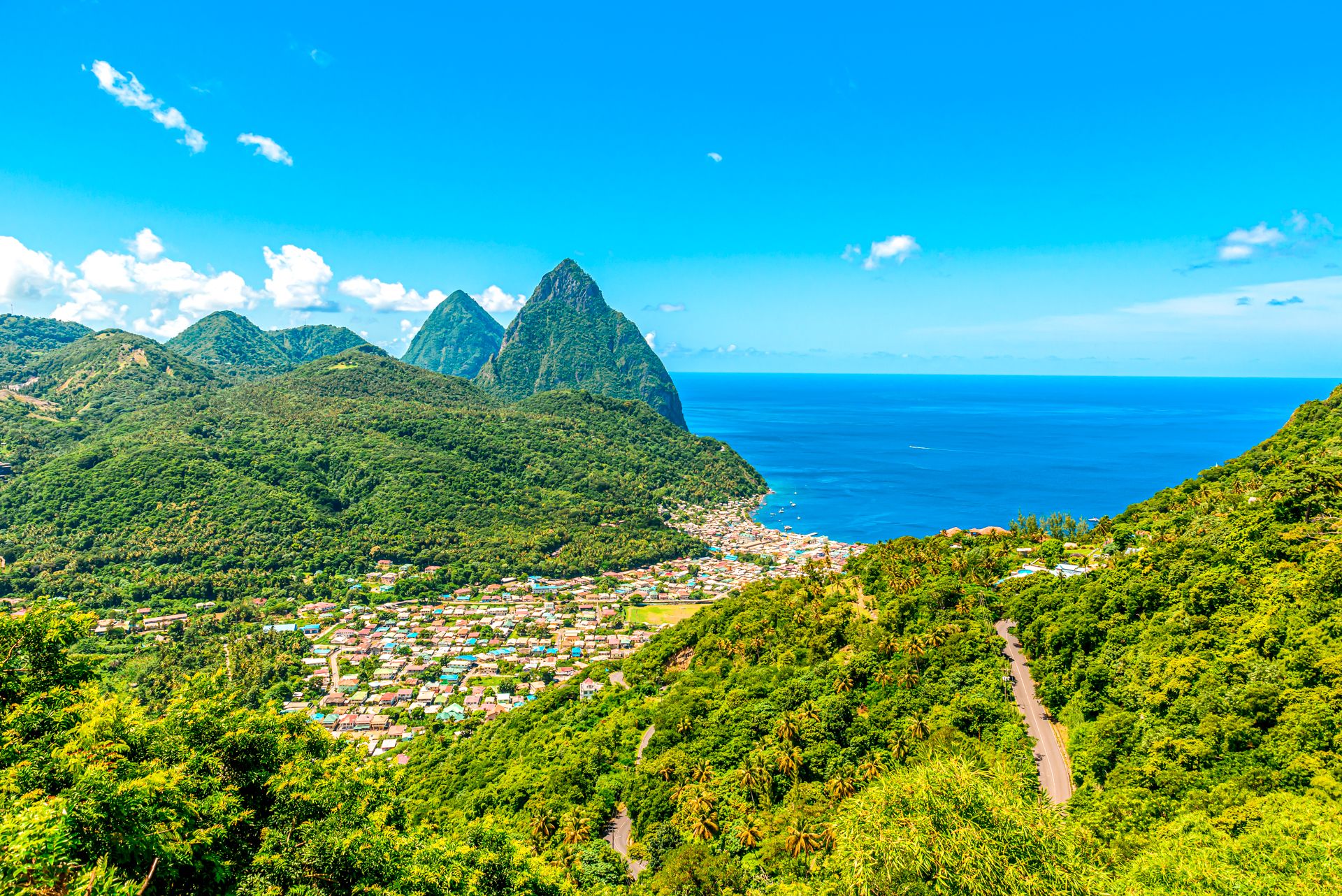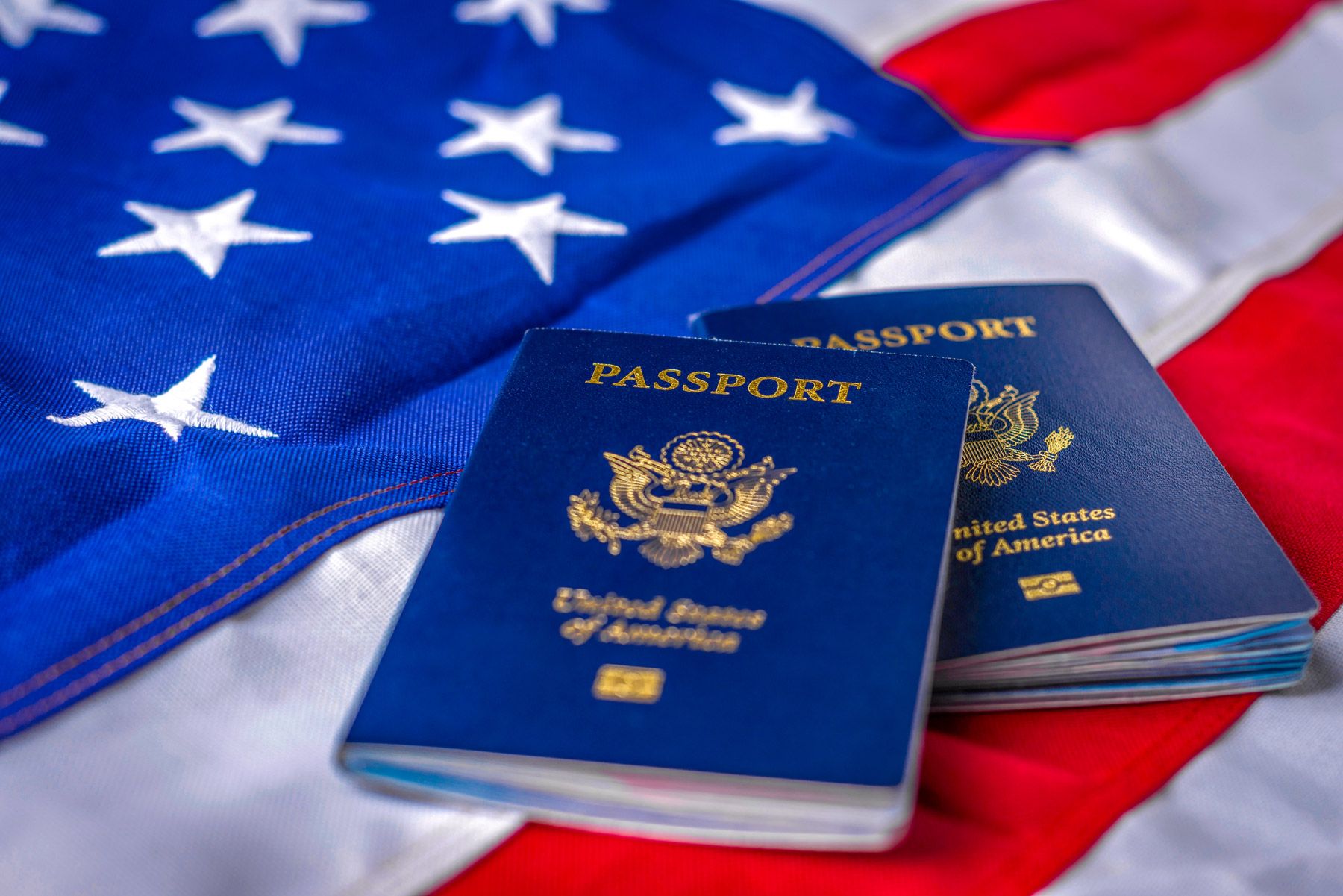Conservation & Turtle Egg Hatching In Jamaica – A Worthwhile Vacation Experience
Sea turtles are considered ancient seafarers and are thought by some to have lived alongside dinosaurs. There are just so many fascinating facts about sea turtles that it can be hard to know where to begin!
For one thing, they have amazing navigational skills, so much so that female sea turtles return, no matter the distance, to the very beach where they were born to lay their eggs. Sea turtles are quite majestic to look at as they swim through the ocean as well. There’s a problem though: many species of sea turtles are on the endangered and critically endangered lists!
Making that formidable list means that without the right amount of effort and funding, some species of sea turtles could very well be wiped out in a few years. Fortunately, there are many organizations throughout the world engaged in sea turtle conservation and monitoring. This has helped to protect the more vulnerable species of turtles.
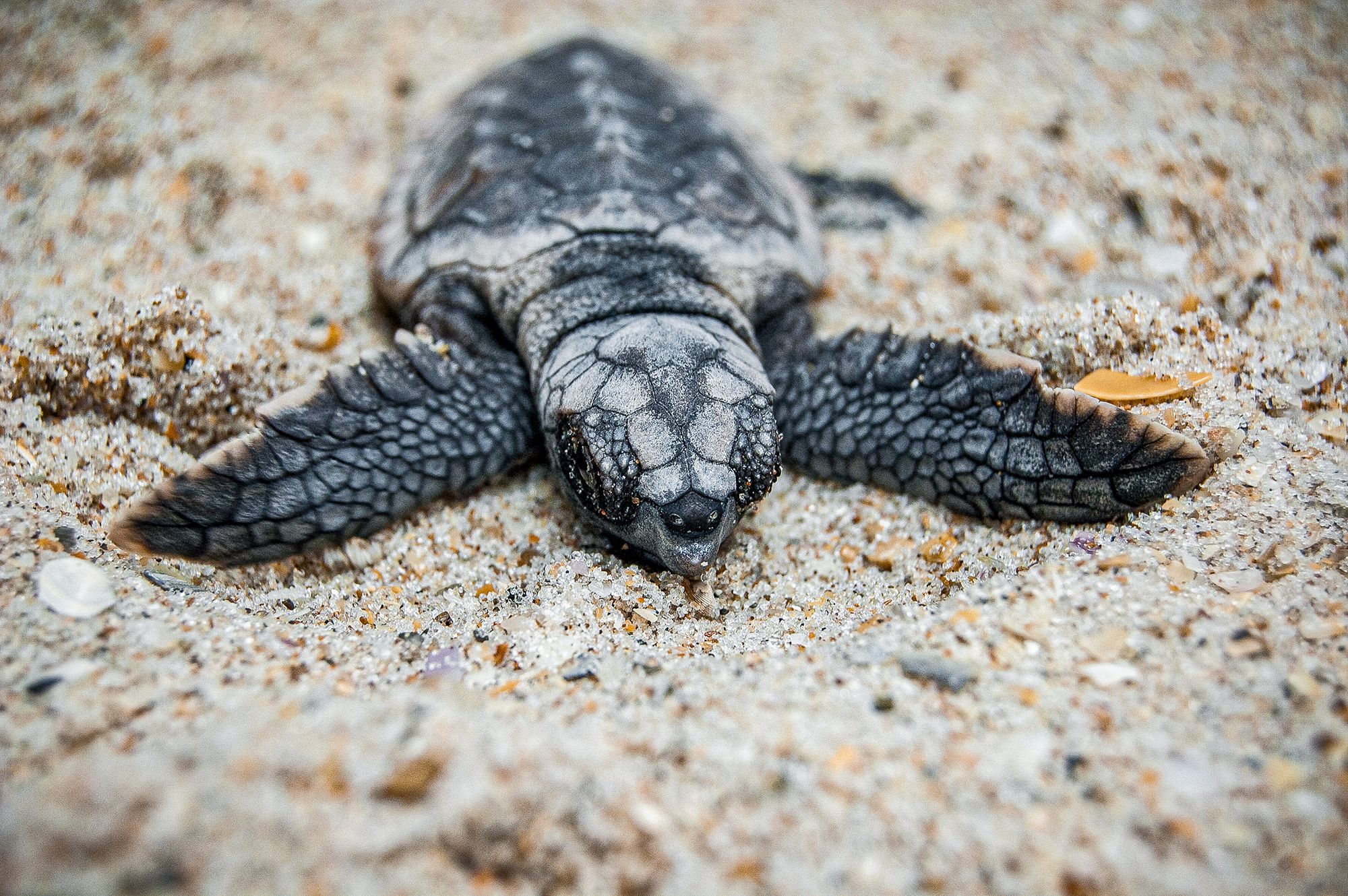
In Jamaica, there are a handful of conservatories that focus on sea turtle preservation efforts. As part of this post, we’ll highlight these and everything you need to know about turtle egg hatching in Jamaica, so you can jump right into the experience (and even assist if you’d like) once you arrive!
Expert tip: Watching sea turtles hatching is an amazing experience! If you don’t want to miss out, keep in mind that the best time to see the turtle egg hatchings in Jamaica is between July and December.
What kind of sea turtles live in Jamaica?
There are four types of sea turtles that can be found in Jamaica. This includes the green turtle, the loggerhead, hawksbill, and leatherback turtles. Of these species, the leatherback and hawksbill are on the list of critically endangered species, and, as such, conservation efforts in Jamaica and elsewhere focus on protecting these marine animals as much as possible.
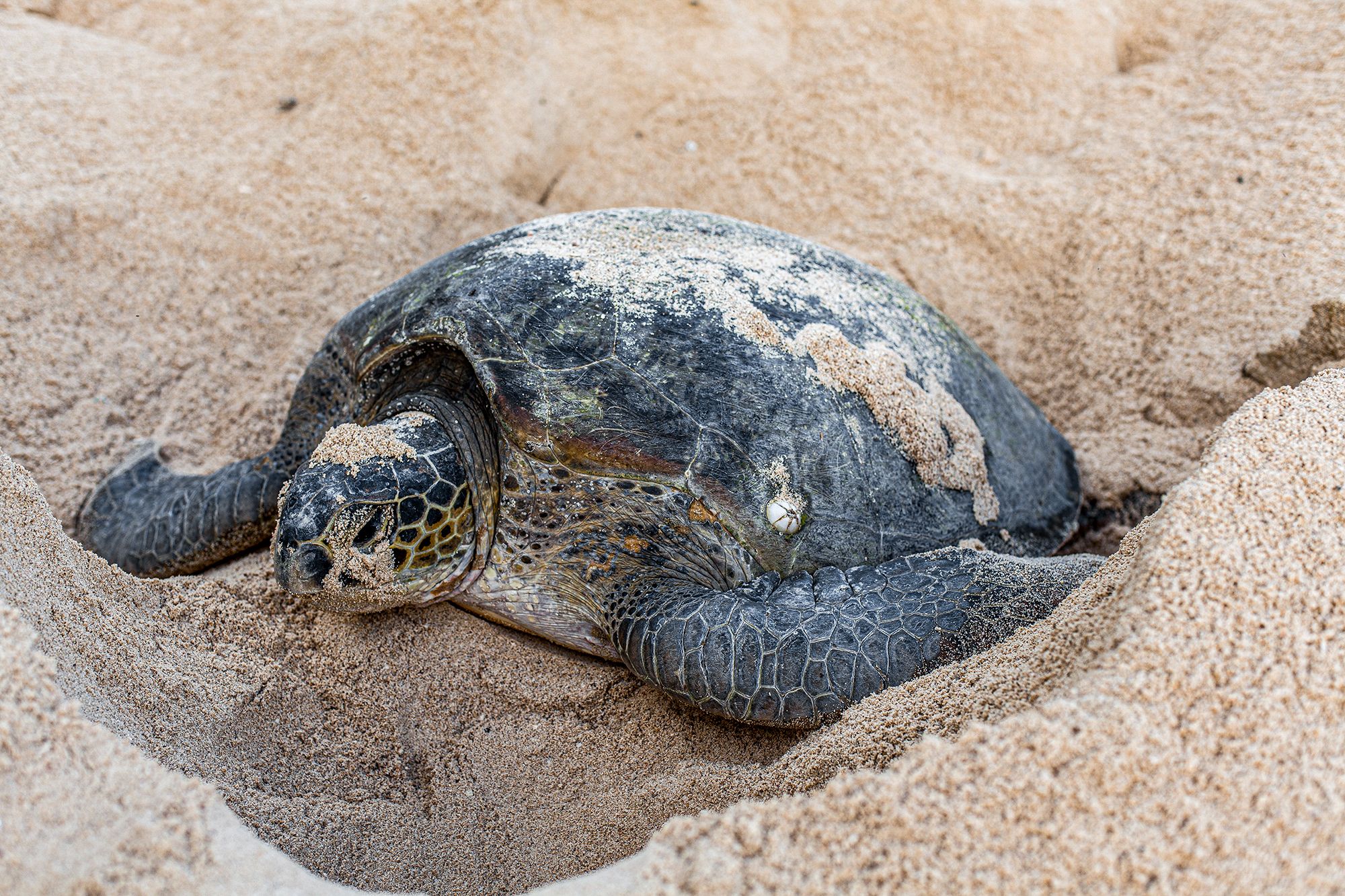
Though not quite on the list of critically endangered species, the green turtle and loggerhead are very much endangered as their numbers have dwindled over the years. Interesting facts about the loggerhead and green turtle? The loggerhead sea turtle is the second largest marine turtle in the world, while green turtles are herbivorous in their adult age and feed on seagrass and algae!
Expert tip: The biggest leatherback turtle nesting population is found on Levera Beach in Grenada, making turtle spotting one of the amazing things Grenada is known for!
What does sea turtle hatching entail?
Once female sea turtles lay and bury their eggs in the sand, they head back to the open sea. The eggs remain in the sand for about two months until the day they hatch. Then, the hatchlings make their way out of their nests by digging themselves out from beneath the sand.
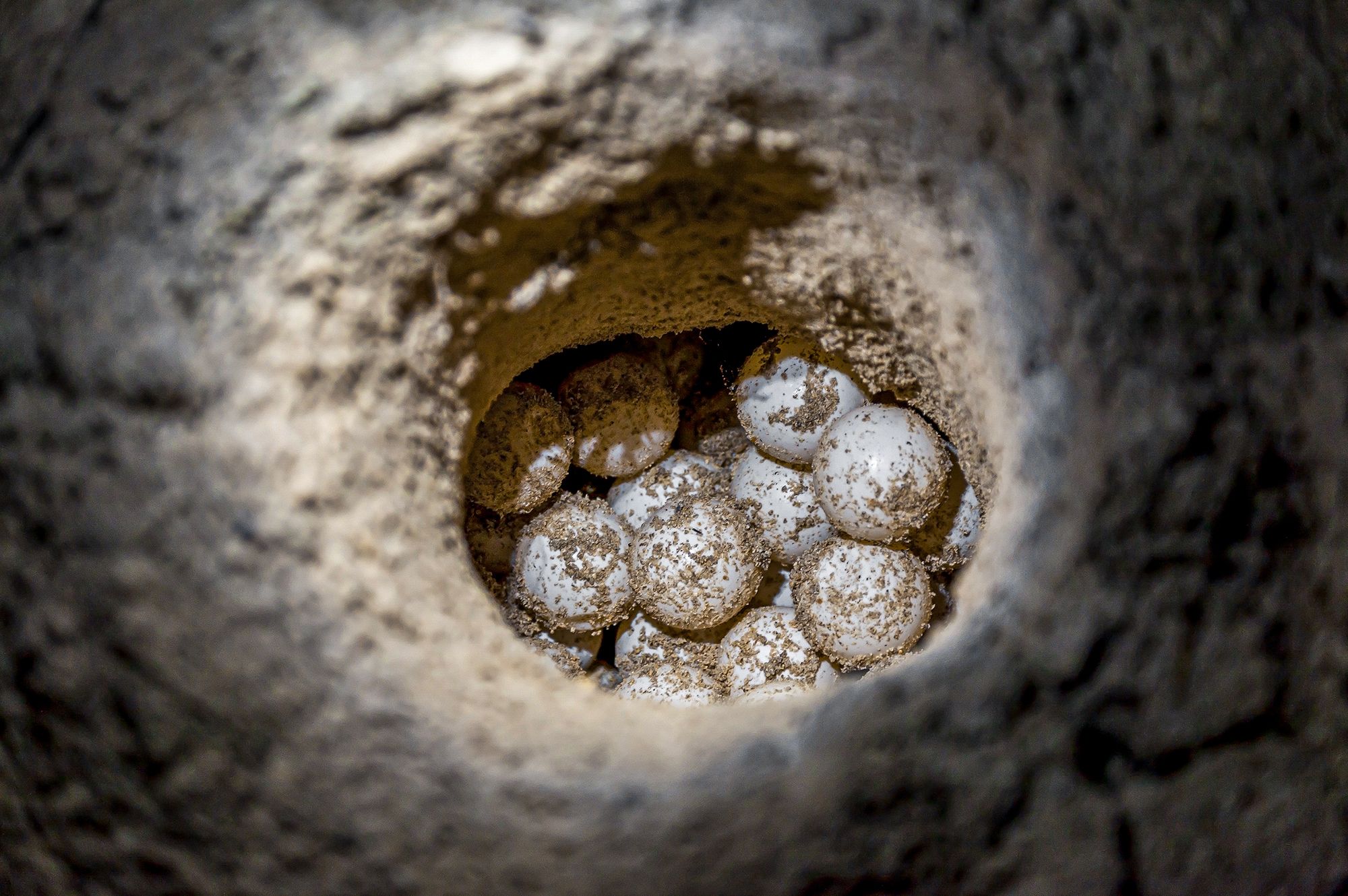
The next step of their journey involves the hatchlings making their way across the wide expanse of sand to the ocean without being snatched up by predators, such as birds. Soldiering their way across the sand, the tiny sea turtles head towards the ocean. They must use all their strength and primal instinct. The first ones out of the nest tend to be the fastest ones, but that doesn’t always guarantee their survival.
The fittest and luckiest of them all will make it to the sea and, hopefully, live on to repeat the cycle.
Sea turtle nesting & incubation
The sea turtle nesting season is usually between the months of May and December. During this time, female sea turtles make an oceanic trek back to the beach where they were born to lay their eggs. Mother turtles will build their nests away from the water by digging holes in the sand. The turtles then lay their eggs in these holes and bury the eggs in the sand where they remain for a few weeks.
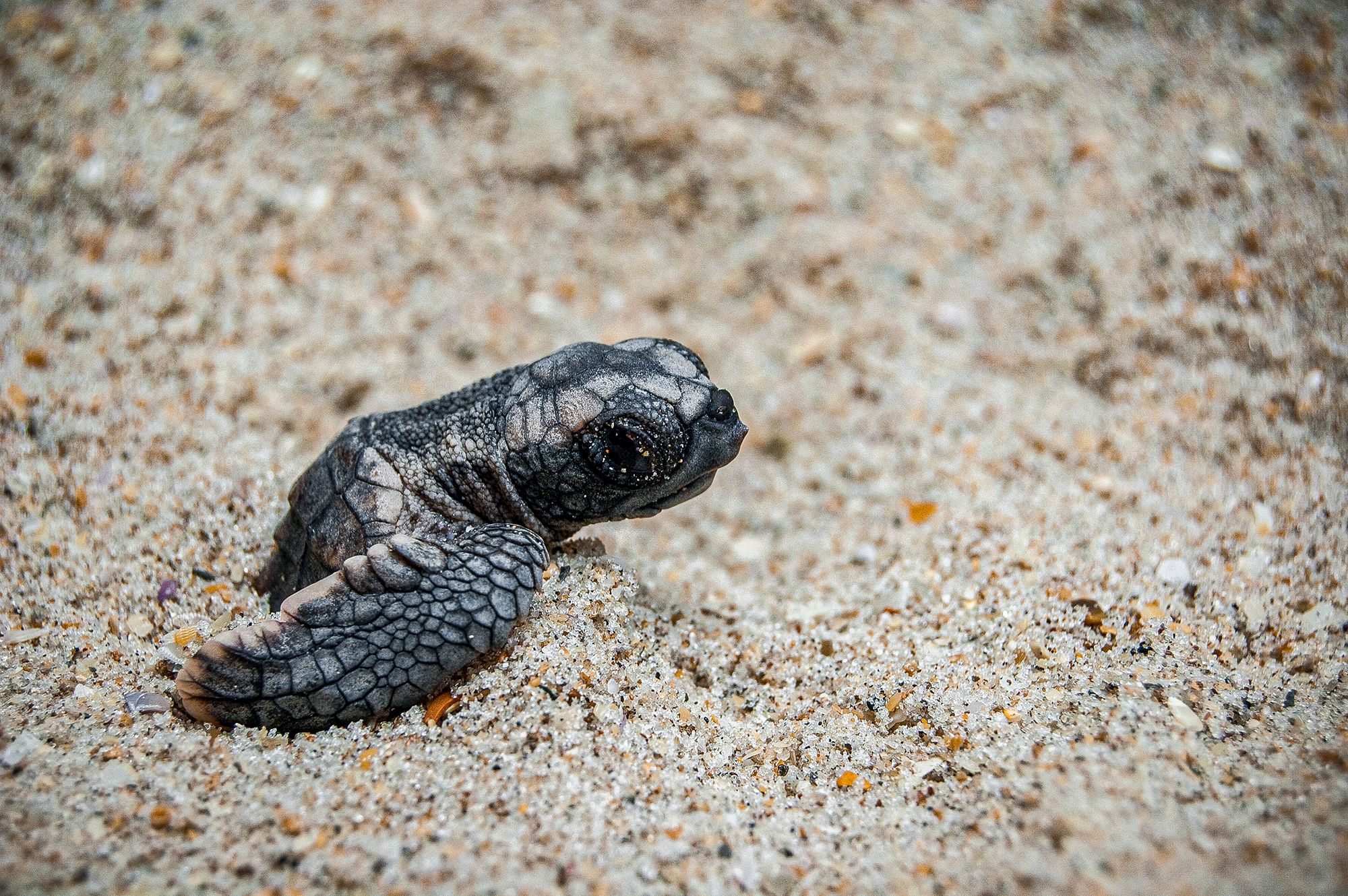
In many ways, the sand functions like an egg incubator. So much so that the temperature of the sand influences the gender of the hatchlings. More female hatchlings are typically found in the sand at higher temperatures, while cooler temperatures mean more male hatchings.
The sand has other benefits too. While buried, the sea turtle eggs are well protected from predators like birds, reptiles, raccoons, dogs, and so on.
Sea turtle hatching
A lot happens between the time sea turtle eggs are laid and when the baby turtles break free from their shells and get to the water. After an incubation period of about 45-70 days, baby sea turtles break through their eggs with the help of an ‘egg tooth’, which is a temporary part of their anatomy. It can actually take 3-7 days for the hatchlings to dig their way out of the sand. Through this process, they are building up their strength for the world that awaits.
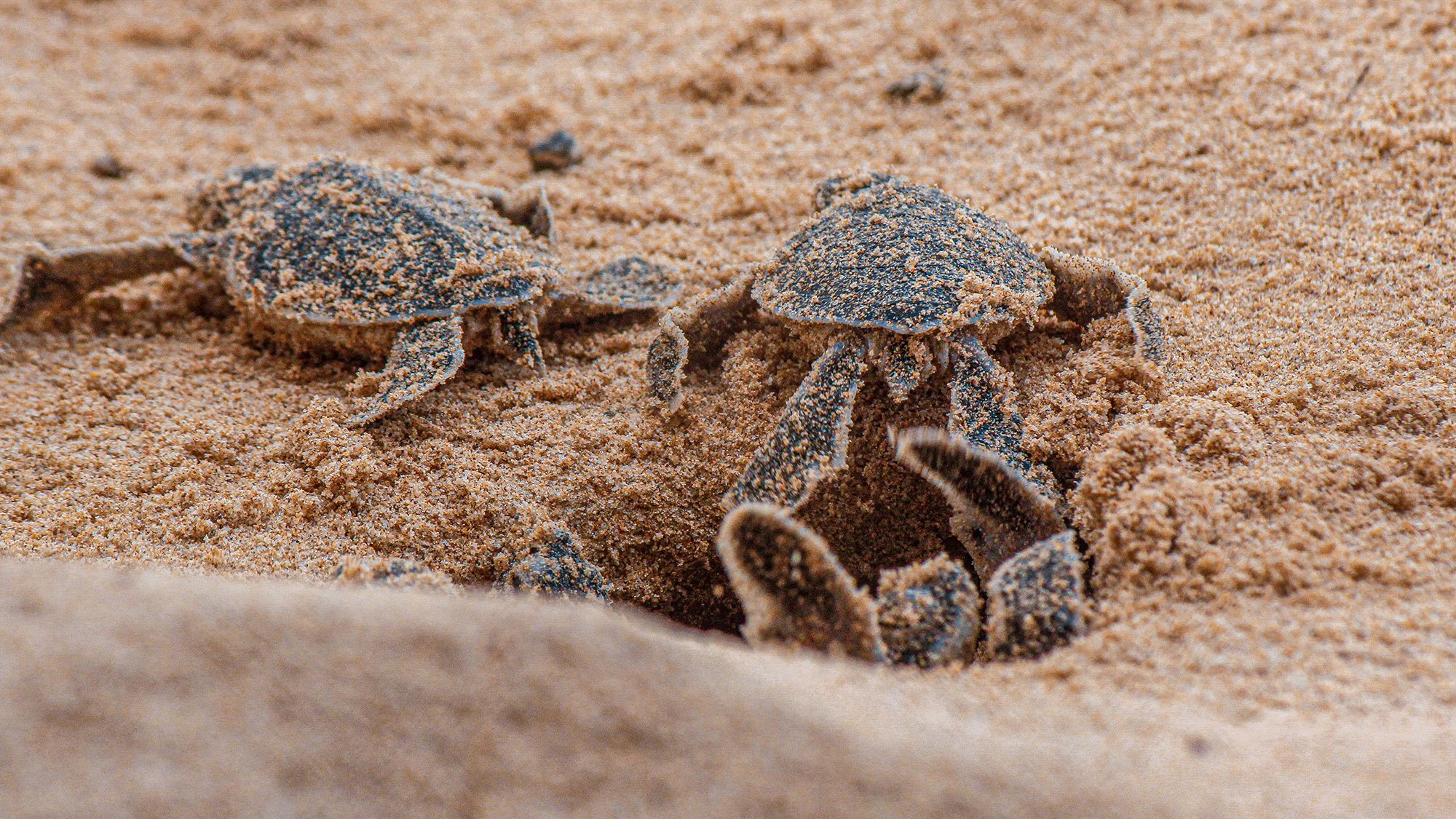
Usually, there are around 100 eggs (sometimes up to 150) in a female sea turtle’s nest. These eggs hatch all at once. Once they do, the sea turtles dig upwards through the sand to the surface and make a mad dash to the water. The fact that the mother turtles do not wait around for the babies to hatch means that the hatchlings must embark on this journey alone, making it all the more dangerous.
Driven by instinct, the turtles know exactly where to go and usually emerge from their nests under the cover of night. Not all baby sea turtles will make it to the ocean, but for the ones that do, the arduous journey is only halfway done. The hatchlings must continue to swim, possibly for as long as the next 24 to 48 hours, to make their way into deeper water and away from predators.
Good to know: Some people refer to sea turtle hatching as a ‘sea turtle boil’. This term refers to the illusion of boiling sand that appears as the baby turtles dig frantically to break free from their nests.
Where can you see baby sea turtles hatch in Jamaica?
There are a few key beaches in Jamaica that are popular with nesting turtles. These include beaches on the north coast like Hope Bay, Winnifred Beach, and Ocho Rios beach. Beaches on the south coast like Treasure Beach, Bluefields, and Whitehouse are quite popular as well. If you want a trip to Jamaica that includes turtle watching tours, it’s a good idea to stay at either a couples-only resort in Ocho Rios, a family-friendly resort in Ocho Rios, or at Sandals South Coast. where you’ll easily be able to plan excursions and enjoy the island.
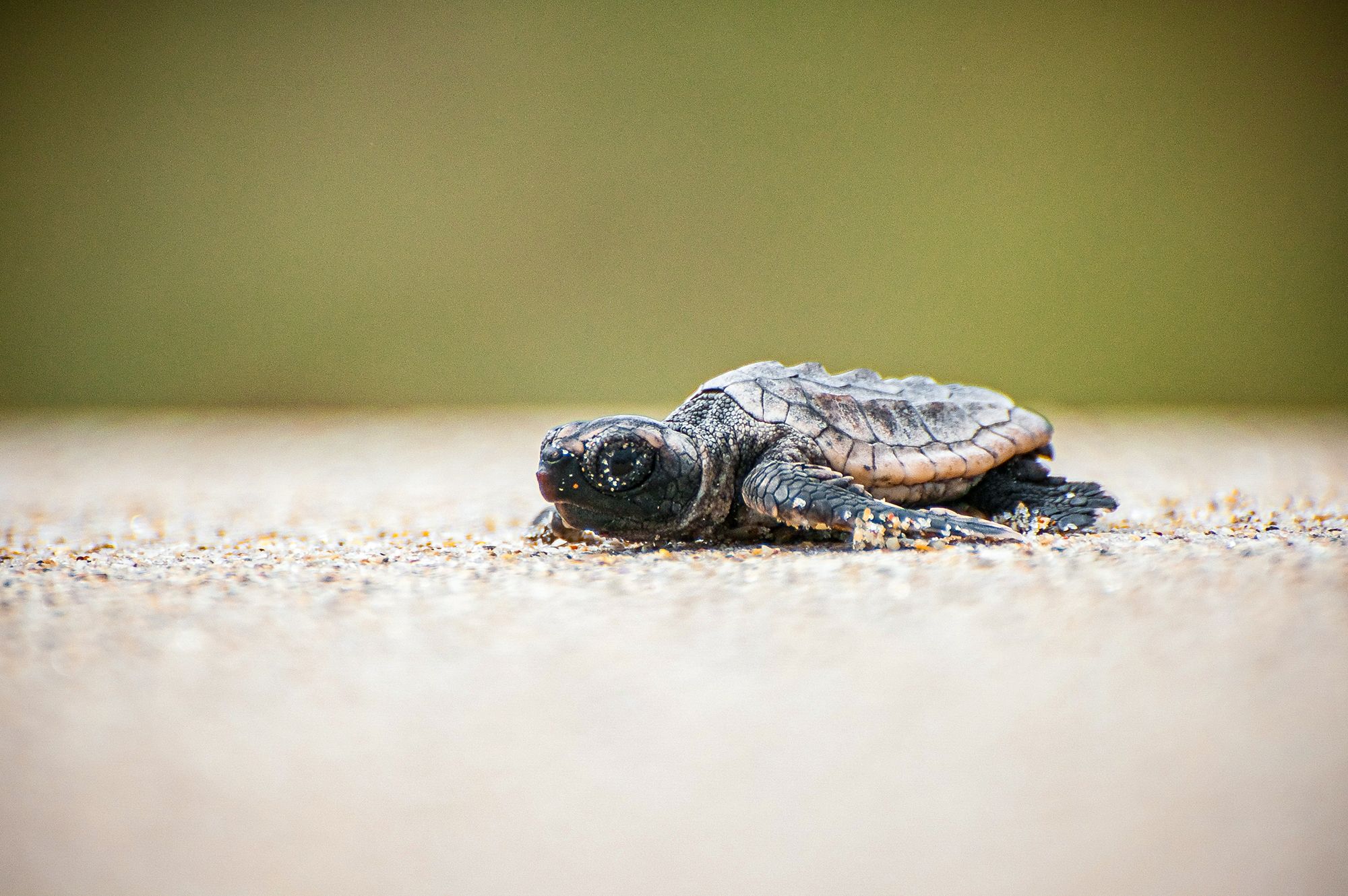
If you’ll be staying at Sandals, it’ll be easy to book your turtle-watching excursion directly through your resort. Turtle-watching tours make it possible to get up-close views of turtles and to have an unrivaled nature-oriented experience. During some turtle watching tours in Jamaica, you might even be able to help guide baby turtles to the sea and help with turtle release, which can lead to a higher rate of survival for the hatchlings.
How can you get involved in turtle conservation in Jamaica?
If you want to find out more about sea turtle conservation or get involved, it will be worthwhile to sign up for a turtle-watching tour! One of the options is the special turtle watching tour offered through a partnership with the Sandals Foundation, Island Routes, and the Oracabessa Foundation. This experience allows you to see live baby turtle releases in the most memorable way. Plus, the funds from the turtle tour go back to the Oracabessa Foundation, which protects sea turtles and has released thousands of baby turtles over the years.
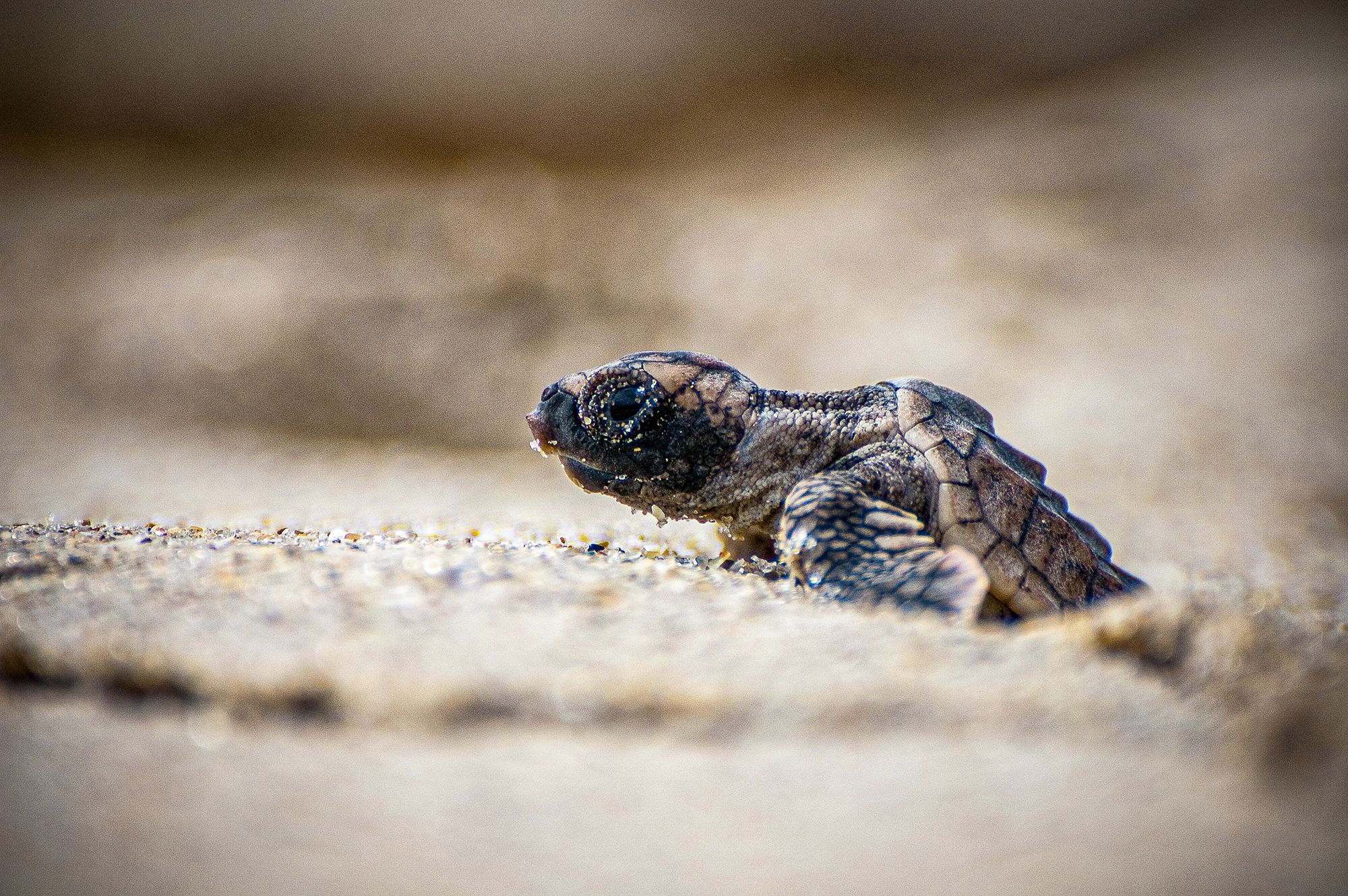
If you’re interested in turtle watching, this experience might just be the highlight of your vacation. On the best days, you’ll get to interact with turtle hatchlings in their natural habitat, which will make for quite a memorable vacation experience!
Sea turtle preservation at Sandals
Sea turtles are a critically endangered species, and in the Caribbean, there are select organizations, like the Sandals Foundation, that focus on supporting turtle conservation initiatives. All over the Caribbean, the Sandals Foundation partners with local groups and organizations to help preserve sea turtles, coral reefs, and other populations of marine life. Community education is also a core focus.
As a part of their turtle conservation efforts, Sandals manages the Boscobel Marine Sanctuary in St. Mary, Jamaica, the Whitehouse Marine Sanctuary in Westmoreland, Jamaica, and participates in other related programs.
Good to know: Sandals is also dedicated to the protection of coral reefs and general marine conservation. You’re welcome to help the Sandals Foundation save the ocean!
Boscobel Marine Sanctuary
The Boscobel Marine Sanctuary is located in St. Mary parish on the north coast of Jamaica. In 2017, this is a protected area officially became the first ‘rotating fish sanctuary’ on the island. This means that, unlike many other protected marine areas, the Boscobel Marine Sanctuary is open for fishing at certain times of the year. Local fishermen benefit from this arrangement because there tends to be an increase in the population of fish, as well as fish biomass, as a result.
Overall, the intention of the Boscobel Marine Sanctuary, much like other sanctuaries in Jamaica, is to protect and preserve sea turtles and other vulnerable marine life through established restrictions, with a focus on community engagement and education.
Whitehouse Marine Sanctuary
The Whitehouse Marine Sanctuary is a wildlife conservation project that was established in 2015. This marine sanctuary includes a beach area, coral reefs, and mangroves. There are wardens who work within the office at this location, monitor the nests and sea turtle activity, and participate in community and school outreach.
While in Jamaica, you can get involved with this and other sea turtle preservation efforts even if you’re just heading to the island for a vacation. Sandals South Coast is near the Whitehouse Marine Sanctuary and it is a great accommodation option if you want to take part in turtle conservation efforts or do tours while in Jamaica.
Good to know: In the year 2021, 312 sea turtle hatchlings were hatched and released at the Whitehouse Marine Sanctuary.
Bluefields Bay Fishermen’s Friendly Society (BBFFS)
In Jamaica, the Sandals Foundation works closely with local communities to preserve sea turtles and their hatchlings. The Foundation partners with local groups like the Bluefields Bay Fishermen’s Friendly Society (BBFFS) in funding turtle conservation projects. As Bluefields has long been known for its high record of sea turtle activity, this is actually one of the key places on the island of Jamaica for turtle conservation endeavors. Efforts ramp up during nesting season when the sea turtles come ashore to lay eggs.
Through its association with the Bluefields Bay Fishermen’s Friendly Society, the Sandals Foundation helps to protect and strengthen sea turtle populations in this area. Sandals South Coast and the Bluefields beaches are active nesting sites in Westmoreland, Jamaica that have recorded turtle nesting action over the years. These areas benefit from the presence of conservation wardens funded by the Sandals Foundation. The wardens do both day and night beach patrols, which are vital to nest identification and keeping nesting sea turtles safe. The wardens are also skilled in nest releases and anti-predation practices. Their work spans six different beaches.
Good to know: The BBFFS has released over 8000 live hatchlings to date as part of its sea turtle preservation efforts.
Turtle egg hatching? What a way to spend your vacation in Jamaica!
Picture: Located very close to the Whitehouse Marine Sanctuary, Sandals South Coast in Whitehouse, Jamaica combines Caribbean beauty with European elegance for a truly breathtaking experience. Plus, every room has an ocean view!
Most people spend their vacations in Jamaica enjoying the sun, sand, sea, and cocktails! While you’re sure to want to make the most of those aspects while you’re on the island, it’s a great idea to throw in some new, remarkable experiences. You’ll be amazed by the natural phenomenon of turtle egg hatching. It’s an enjoyable activity with a purpose. There’s a unique opportunity to support sea turtle conservation efforts by observing turtle egg hatching in Jamaica. You should seize it!
If you stay at a luxury Sandals all-inclusive resort, not only will you have access to all the conveniences you’ll need for your island experience, but you’ll easily be able to book your excursions directly through the resort. Come for the turtles and stay for the unlimited food and drinks, gourmet dining, day and night entertainment, and loads of other quality inclusions!
A stellar Caribbean vacation where you can truly make a difference - there’s no better feeling.
Expert tip: Have your heart set on a Jamaica getaway? Here are some cool things to do in Jamaica.
